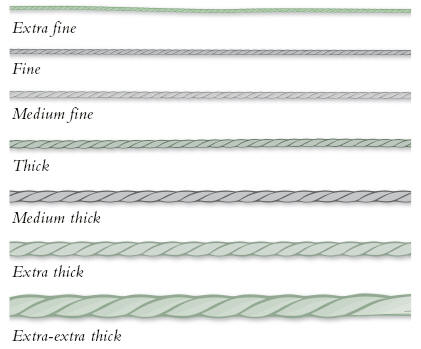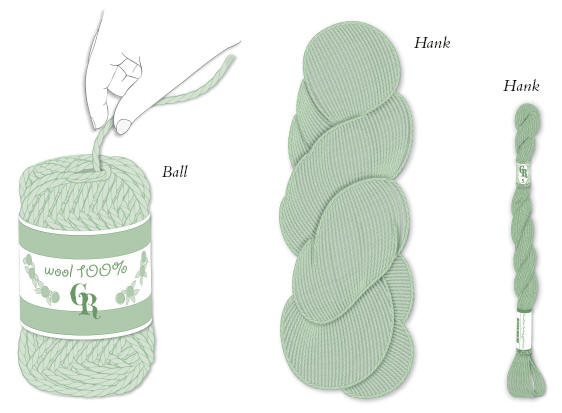
Yarns
Knitting - Basic Techniques
Yarn comes in a variety of fibbers and thicknesses. It may be made of only 1 fibber or a blend of several, such as wool, cotton, linen, bam- boo, angora, mohair, and synthetics.
The diameter (thickness) of the yarn varies from the thinnest (extra fine or cobweb), for lacy items, to extra-extra thick (super bulky) for warm outer garments and rugs. The most common yarns for garments are DK, sport, and worsted.
Yarn is normally sold in balls, skeins, or hanks but may be packaged differently depending on the fibber. Pull skeins and balls are pre- wound, so they are ready to use. Hanks are loosely twisted bundles of yarn and are best used after they are wound into balls. .

Yarn comes with labels that clearly state the name of the yarn, its color number (and/or name), dye lot, the type of fibber(s), the suggested gauge, how to care for it, and any precautions to take.
Be sure to keep at least 1 label for each yarn used, so that you can refer to it if you need to make additional purchases or when you wash the item. Leftover yarn can always be used for seaming or for repairs—so keep your leftovers.

